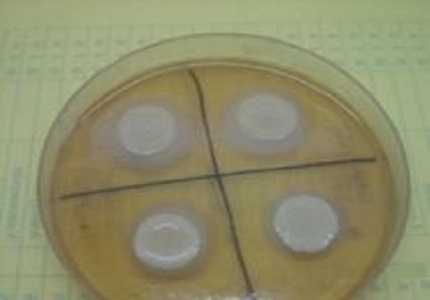In vitro evaluation of virulence factors associated with clinical isolates of Candida species from patient in tertiary care hospital in Central India
Abstract
Background: Adherence to host tissues, morphological changes and secretion of extracellular hydrolytic enzymes are important virulence attributes of Candida species. These enzymes play pivotal roles in pathogenicity of Candida infection.
Aim: The present study was conducted with an aim to determine in vitro phospholipase, haemolysin, Coagulase activities and biofilm production of Candida species isolated from various Clinical samples.
Material and Method: A total of 156 Candida species isolated from various clinical specimens were identified up to species level by standard mycological techniques and was tested for extracellular hydrolytic enzyme activity and Biofilm formation.
Results: 156 Candida species were isolated from 915 clinical specimens. Biofilm production was shown by 77 candidal strains (49.35%), phospholipase activity was observed by 74 candidal strains (47.43%). haemolysin activity was observed by 66 candidal strains (42.30%) and Coagulase production in 38 of Candida (24.35%) isolates.
Conclusion: Both C. albicans and Non-albicans Candida (NAC) species produce extracellular hydrolytic enzymes. Since these enzymes are important to understand the co-relation between the species and infection, their detection is extremely important in the management of infections caused by various Candida species.
Downloads
References
2. Ying S, Chunyang L. Correlation between phospholipase of Candida albicans and resistance to fluconazole. Mycoses Jan2012; 55(1): 50-5 doi:10.1111/j.1439-0507.2011.02024.x
3. Deorukhkar SC, Saini S. Non albicans Candida species: Its isolation pattern, species distribution, virulence factors and antifungal susceptibility profile. Int J Med Sci Public Health 2013; 2(3):533-8. doi: 10.5455/ijmsph.2013.080320131.
4. Gwan V, Butola R, Madan M. Comparison of Biofilm formation in clinical isolates of Candida species in a tertiary care center, North India. Indian J Pathol Microbiol 2015;58(4):475-8.
5. Yigit, et al. Investigating Biofilm Production, Coagulase and Hemolytic Activity in Candida Species Isolated From Denture Stomatitis Patients Eurasian J Med. 2011; 43(1): 27–32.
6. Samaranayake LP, Raeside JM, MacFarlane TW. Factors affecting the phospholipase activity of Candida species in vitro. Sabouraudia. 1984;22(3):201-7. [PubMed]
7. Deorukhkar S, Saini S. Evaluation of phospholipase activity in biofilm forming Candida species isolated from intensive care unit patients. British Microbiology Research Journal. 2013;3(3):440–447.
8. Kumari V, Banerjee T, Kumar P, Pandey S, Tilak R. Emergence of non-albicans Candida among candidal vulvovaginitis cases and study of their potential virulence factors, from a tertiary care center, North India. Indian J Pathol Microbiol 2013; 56(2):144-7.
9. Manns MJ, Mosser MD, Buckley RH. Production of a hemolytic factor by Candida albicans. Infect Immun. 1994;62(11):5154–6.
10. Ebhodaghe B, Ajibade K. Identification of Virulence Factors Produced by Candida Isolates from HIV Seropositive and HIV Seronegative Pregnant Women.IJTDH.2016; 20(1): 1-9.
11. Deorukhkar S, Saini S. Non albicans Candida species: its isolation pattern, species distribution, virulence factors and antifungal susceptibility profile. Intern J of Med Science and Public Health.2013; 3 (2):533–38.
12. Yigit, N, Aktas A, Ayyildiz A. Detection of Coagulase Activity in Pathogenic Candida Species. J of Int Medical Research 2008;36(6): 1378-1382. [PubMed]
13. Mohandas V. Distribution of Candida species in different clinical samples and their virulence: Biofilm formation, proteinase and phospholipase production: A study on hospitalized patients in Southern India. J Glob Infect Dis. 2011;3(1):4-8.
14. Mohan das V, Ballal M. Proteinase and phospholipase activity as virulence factors in Candida species isolated from blood. Rev Iberoam Micol. 2008 Dec 31;25(4):208-10.
15. Deorukhkar SC, Saini S, Mathew S. Virulence Factors Contributing to Pathogenicity of Candida tropicalis and its antifungal Susceptibility Profile. Int J of Microbiol, vol. 2014, Article ID 456878,6pages,doi:10.1155/2014/456878.
16. Thangam M, Smitha S. Deivanayagam, C. N. Phospholipase activity of Candida isolates from patients with chronic lung disease. Lung India. 1989; 7(3): 125–6. [PubMed]
17. Samaranayake LP, Raeside JM, MacFarlane TW. Factors affecting the phospholipase activity of Candida species in vitro. Sabouraudia. 1984;22(3):201-7.
18. Rodrigues AG, Pina-Vaz C, Costa-De-Oliveira S, Tavares C. Expression of plasma coagulase among pathogenic Candida species. J of Clinical Microbiology.2003; 41(12):5792–3.
19. Deorukhkar SC, Saini S. Non albicans Candida species: A review of epidemiology, pathogenicity and antifungal resistance Pravara Med Rev 2015; 7(3):7-15.



 OAI - Open Archives Initiative
OAI - Open Archives Initiative


